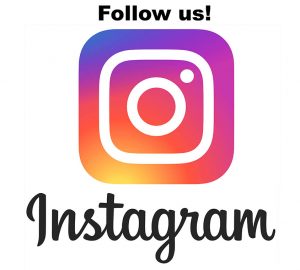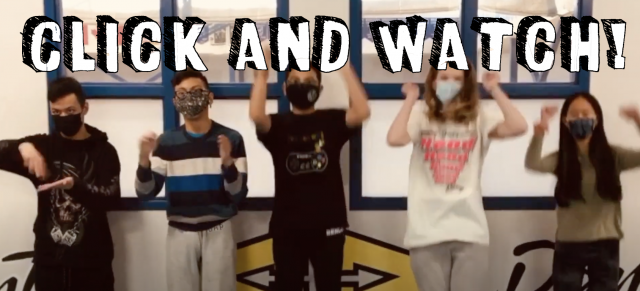Welcome to the BC Provincial School for the Deaf Dance Program!
JOIN BCSD DANCE AND DANCE PRODUCTION NEXT YEAR!
WHAT IS BCSD DANCE?
BCSD Dance is open to all gr.8-12 students from our Deaf & Hard of Hearing programs. No experience necessary! Due to increased interest in the dance program, a special class exclusive to BCSD students was developed to better service their needs. This class is so exclusive that it is currently the only all deaf dance class in Canada that provides BCSD students course credit!
The BCSD Dance class is small, so students become very close because they work as a team. BCSD dancers are proud to represent their Deaf community by performing for others on stage or virtually. Dancing greatly improves the mobility and balance in our students while offering another way for these dancers to express themselves. The challenge of communicating with one another while dancing forces students to use problem solving and critical thinking skills. There are a lot of opportunities for team building and performance. The class determines the style of dance they would like to learn as a group. In the past, we have performed Tinikling, Hawaiian, Bhangra, Māori Poi, Jazz, Modern, Chinese Fan Dance, Ribbon Dance, and Tutting. Students who take a dance class in grades 10, 11, and 12 are qualified for a scholarship upon graduation.
CLICK HERE for a look at a BCSD dance performance
CLICK HERE for a look at another BCSD dance performance
WHAT IS DANCE PRODUCTION? (after school)
Dance Production is another course that welcomes BCSD students to join. This class runs after school and integrates hearing, deaf, and hard of hearing students. There is no dancing involved in this course and no experience is necessary. Students grades 9-12 get a course credit but grade 8 & 9 students may join as club members. Students gain experience in the behind-the-scenes aspects of putting on various productions including our year end dance recital. Ms. Wilson team teaches with Ms. Dewar who teaches Theatre Production, so students will gain a wide variety of opportunities to work in behind the scenes type work. Students are given the choice to work in a specific “crew” within the class.
STAGE MANAGEMENT CREW: Stage managers manage the whole production from start to finish. Their job is to make sure every other crew is working within a given timeline so that our production is successful. They also work on the nights of the production backstage to keep every performer and stage hand on task!
MARKETING CREW: Marketing is in charge of creating promotional materials for the production like posters, websites, social media, tickets, and gear for our productions. They work promote each production within the school and out in the community; including collection of monetary donations to support larger productions like our musicals. They also think of creative ways to fundraise for our productions and programs through sales and fundraising events!
SET DESIGN CREW: Do you like working with your hands? Do you like to paint or make sculptures? This is the crew for you! Set Design is in charge of making any scenery for our productions. Backdrops are painted to set the scene in a production. If we need a large pineapple house on stage or saloon doors that swing both ways, set design crew members have to work together to find a creative solution!
PROPS CREW: Props crew is another group that is perfect for students who like art or crafts. They are in charge of anything that a performer holds. If we need 15 umbrellas that look like jellyfish or glow in the dark objects that performers dance with, this crew will source or make these items.
COSTUMES CREW: Do you love fashion? Do you love to sew or want to learn how to sew? Use your imagination to create wonderful costumes that
LIGHTING CREW: Lighting crew learns how to use specific lighting equipment and technology to light scenes in our productions. This could include using a haze machine and programming lights to go with the music to help amplify a performance on stage. They help to create the atmosphere of the overall show and work closely with the stage managers and sound crew.
SOUND CREW: Sound crew learns how to work with a soundboard for various productions. They collect sound effects or music to create ambiance in a particular scene. They program these sounds into a program and run the sound on the nights of these productions. They work closely with the lighting crew and stage managers.
This course is a wonderful way to meet new friends from all grade levels as a lot of our projects are group based. Teamwork is a huge aspect of this class. Students who are not enrolled in another dance course will be expected to help run the year end dance recital backstage. This course counts as a dance course towards the dance scholarship. Students who register in a dance course in grades 10, 11, and 12 will automatically qualify for a dance scholarship in their graduating year. Up to $2000 is awarded each year.
Students can expect to learn skills in the areas of marketing, graphic design, organization, costume design, music mixing, set construction, makeup design, prop design, and stage management. This course is a wonderful way to meet new friends as many of our projects are group-based. Teamwork is an important aspect of this class, so students really support one another when working towards one goal. If you are a creative person who likes to learn new ways of making things, this course is for you!
Students who are not enrolled in another dance course will be expected to help run the year-end dance recital backstage. This course would be beneficial for students who are thinking of pursuing marketing, visual art, fashion design, or stage management. Please note that students who take a dance class in grade 10, 11, and 12 will be qualified for a dance scholarship upon graduation
WORLD DANCE: Broadway Jazz 9-12 (after school)
World Dance 10 is a 4 credit 9th block course in which grade 9 students can take. Previous experience is not necessary. Students explore world dance styles that may include Bhangra, Tahitian, Tinikling, Hawaiian, Broadway Jazz, Musical Theatre, or Maori Poi. Next year will be a focus on Broadway Jazz and Tap. Students will learn dance technique, choreography, history, and other aspects such as costuming and performance. Students may be asked to perform at various events which includes the year end dance recital. Please note that students who take a dance class in grade 10, 11, and 12 will be eligible for a dance scholarship upon graduation.
CLICK HERE for a look at an after school world dance performance
CLICK HERE to look at a practice session in World Dance
HOW CAN I JOIN?
- Choose dance and dance production when you fill out your course selection sheet in January.
- Tell your BCSD principal that you’d like to join BCSD Dance and Dance Production next year.
WHO CAN I CONTACT IF I HAVE A QUESTION ABOUT BCSD DANCE AND DANCE PRODUCTION?
- Email the dance teacher at christina.wilson@burnabyschools.ca
- Visit the dance teacher in the dance room at lunch in G215
- Make an appointment with the principal of BCSD at the front office
- Talk to your friends who are already in BCSD dance and Dance Production.
- Check out our Instagram @burnabysouthdance
FREQUENTLY ASKED QUESTIONS ABOUT DEAF DANCE…
1) Why should I take dance class if I cannot hear the music?
Being deaf should not prevent you from enjoying a dance class. Anyone can dance after all! The benefits are endless. Staying fit physically and mentally are huge benefits but don’t forget you will build your confidence when performing in front of others and learn how to solve problems when working in groups. Learn how to strengthen your body and mind while being in a creative environment.
2) How do Deaf students “hear” music?
Music isn’t always necessary to dance. Dance can be presented with text, spoken word, or even images. Depending on the hearing level of each student, some students can hear the low base beats if the music is turned up and most can feel vibrations within their chests. It is a misconception that they can dance to the beat through the floor as it would be difficult to follow the beat when a dancer spins or jumps off the floor unless it is a slow dance in which the body connects to the floor constantly. Over time and with a lot of practice, dancers are able to use their own internal rhythm to dance with the music. It’s called muscle memory!
3) How do students stay in sync with one another?
Through practice of course! In the past, deaf students would follow hearing students to try to stay on time, but it doesn’t always work. Usually there is a tiny delay in tempo if the student is profoundly deaf and hearing students can also have bad timing. It is only through the repetition of the movements that muscle memory forms and allows a performer who is deaf to stay in sync with other dancers.
4) How does the dance teacher communicate with Deaf students in class?
BCSD has several important support workers that help facilitate the learning of each student. Interpreters use their knowledge of English and ASL (American Sign Language) to build the bridge of communication between the teacher and student. Interveners also use English and ASL but use their skills differently than interpreters as they work with Deaf students who also have mild to profound blindness. EA’s (Educational Assistant) support the students with course material comprehension and help guide students when classroom behaviour interferes with their learning.
In addition to the support system above, the dance teacher also uses some basic sign language specific to dance itself when choreographing or when classroom management is needed. It is difficult for a dancer to look at the interpreter and the dance teacher at the same time, so sometimes the dance teacher will have to use basic signs in such cases.
The dance teacher is continuing to learn sign language as she feels it is important for hearing people to make the effort to learn ASL when working with deaf, hard of hearing, and deaf-blind students.
5) Where can I find out more information about the Burnaby South Dance Program?



